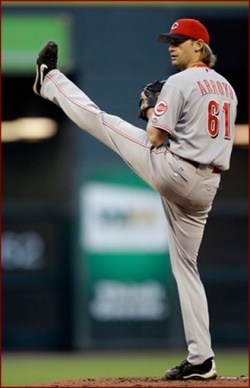We continue our look at the New York Yankees trade deadline moves with 2006. You can check out the 2005 version here.
Lay of the land
After a tumultuous beginning to the 2005 season, the Yankees were in a much better position in 06. At 52-36 they were just a game and a half back of the Red Sox on July 15, and owned the AL’s fourth best record (remember, the Tigers were on pace for 110 wins at that point). Their pitching was much better, even though Carl Pavano, in the second year of his four-year commitment, hadn’t thrown a pitch.
Chien-Ming Wang was emerging as the team’s best pitcher. Mike Mussina had a torrid first half, going 10-3 with a 3.24 ERA in his contract year. Randy Johnson, despite an ERA in tatters, was still getting enough run support to win games. Even Jaret Wright was pitching well enough to be a fifth starer.
The problem was that one hole in the rotation. Shawn Chacon went downhill after taking a line drive off the shin. At the time, Darrell Rasner, freshly plucked off waivers from the Nats earlier in the year, was having some issues and couldn’t come up. In an apparent desperation move to fill a rotation spot, the Yanks signed Sidney Ponson on July 14. That should show their pitching troubles.
In the bullpen, things were a bit better. Mike Myers wasn’t all that bad. Scott Proctor had emerged as Torre’s seventh inning guy. Kyle Farnsworth, in the first season of his three-year deal, was disappointing. Tanyon Sturtze had bombed. Ron Villone was pitching well after sitting dormant for much of the first half. The Yanks were trying various options, including Sean Henn, though not much was sticking. Hell, even Scott Erickson got into nine games.
The look of the offense, though, was a bit more bleak. Hideki Matsui went down in May with a broken wrist and wouldn’t be back until at least September. Gary Sheffield had surgery on his forearm, and it was uncertain if he’d ever be back. The Yanks were running an outfield of Johnny Damon, Melky Cabrera, and Bernie Williams. It wasn’t the worst, but neither Melky nor Bernie had a lot of power. Things had gotten bad enough that the Yanks signed Terrence Long.
Cashman’s moves
July started slowly for Brian Cashman. The Phillies were demanding Phil Hughes in exchange for Bobby Abreu, which was simply out of the question. Still, Cash made a few under the radar moves, picking up Brian Bruney as a free agent after the Diamondbacks released him, and selecting Aaron Guiel off waivers. Nothing groundbreaking, but again part of Cashman’s strategy to pick up some low risk guys.
In the last week of July, Cash made his move. It started small, trading a nothing prospect to Philly for Sal Fasano. Ed Wade and Cashman would hook up four days later, as Philly sent Bobby Abreu and Cory Lidle to New York for C.J. Henry, Matt Smith (who hadn’t yet allowed a run out of the bullpen), and a couple others. It was a clear case of the Yankees taking on salary so they wouldn’t have to send real prospects in a trade. In one swoop Cashman had added his fourth starter and his starting right fielder.
The next day he capped the deadline activity by trading the floundering Shawn Chacon to the Pirates for Craig Wilson, who was to shore up the bench. That didn’t exactly work out, but there was no downside to the trade. A half month later, however, the Yanks made perhaps their worst move by releasing Carlos Pena. Clearly they didn’t foresee his looming breakout season, or else they would have called him up to replace Andy Phillips at first. Plus, who knows if he would have done anything in 06. He was, after all, in the minors for a reason. The Red Sox made a similar judgment.
How it all turned out
There were mixed results with the pitchers, but Cashman scored a bit win with Abreu, who tore it up with a .926 OPS. That helped shore up the outfield, though it would create a logjam later when Gary Sheffield insisted on coming back in late September. Best of all, Abreu gave them an instant replacement for Sheffield, who was going to depart after the season anyway. Aaron Guiel was also a modest success, though nothing to brag about.
Lidle didn’t hold down that fourth rotation spot like they’d hoped, but both Rasner and Jeff Karstens contributed down the stretch. Bruney was a hit in his 19 appearances, allowing just two runs. He did walk 15 in 20.2 innings, which was a sign of things to come for 2007. Still, he helped out a shaky bullpen, which was pretty much without Ron Villone come September.
It’s hard to overstate the importance of the Abreu acquisition. It powered the Yankees through August, including the glorious five-game sweep of the Red Sox which effectively buried them. The Yanks ran away with the division, winning 97 games and finishing 11 games ahead of second-place Toronto. They actually finished ahead of the Tigers, who blew the division to the Twins at the end. That led to a Yanks-Tigers matchup, and we all know what happened there.
Next up is 2007, another season in which the Yankees started off slowly and had a few needs at the deadline.
 It all started yesterday afternoon. AOL FanHouse’s Jeff Fletcher noted that the
It all started yesterday afternoon. AOL FanHouse’s Jeff Fletcher noted that the